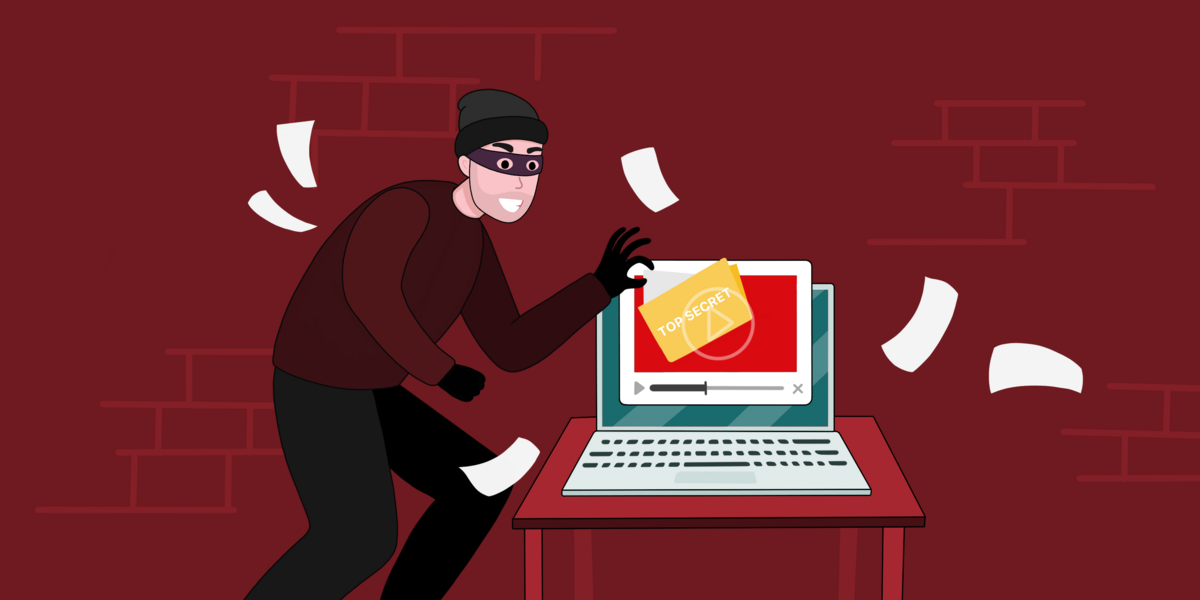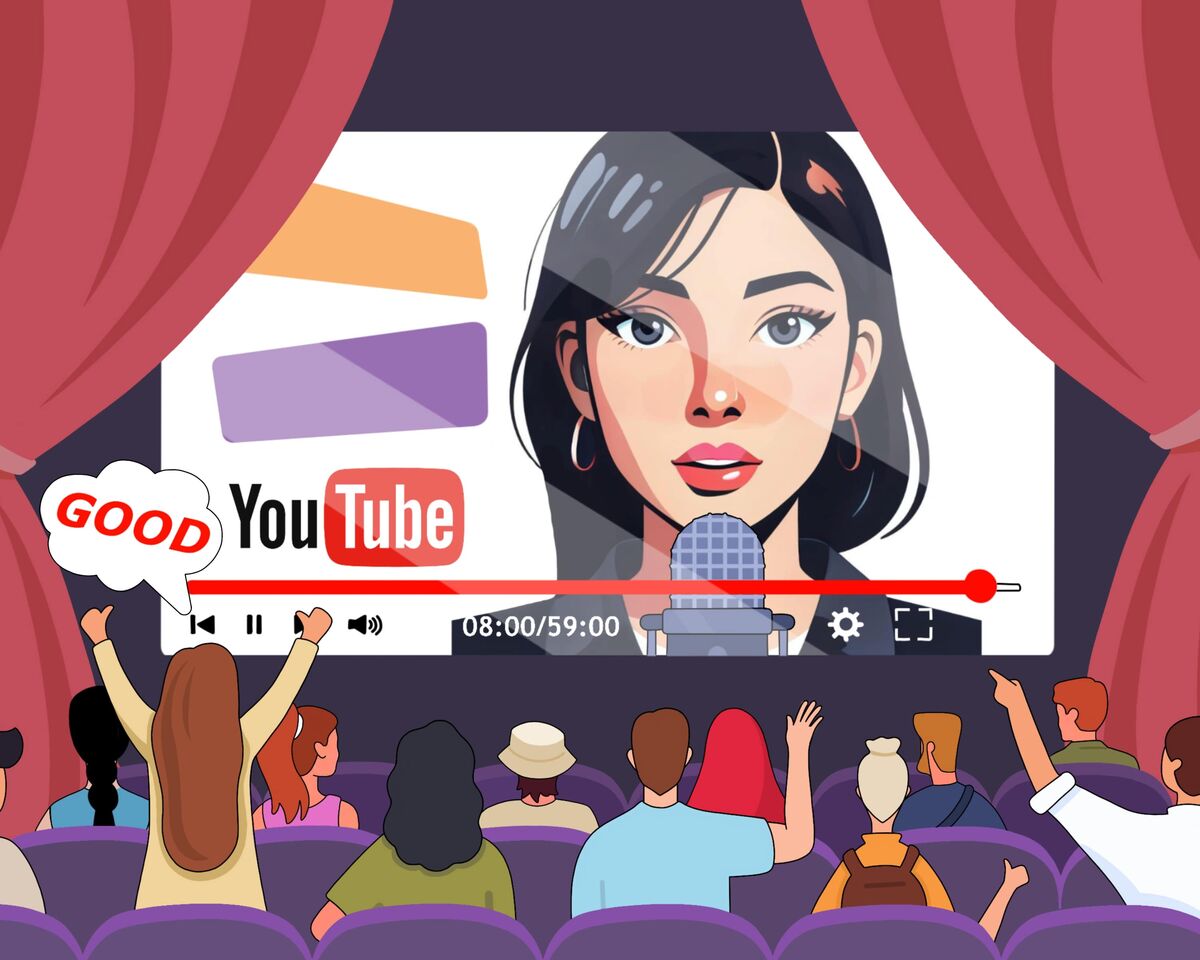Exposing All The "Secret Tricks" for YouTube Promotion

Every day on YouTube, you can find numerous videos offering advice from experts on how to become popular:
- Make Shorts, don’t make Shorts.
- Use others' videos; don’t use others' videos.
- Optimize videos; don’t bother with keywords and tags.
So, what is the truth? Whom should you trust? Sometimes YouTube experts give ineffective or even harmful advice — not out of malice but because they may not fully understand how YouTube works, or their advice is outdated.
Instead of discrediting all experts, it's crucial to identify and avoid harmful and ineffective advice to protect your channel.
Harmful tips for promoting on YouTube in 2024
Let's clarify a few things right away.
No one is perfect, and we all occasionally make mistakes. Over time, recommendations can become outdated and ineffective.
If it seems like all advice today sounds the same, you’re not mistaken. Truly effective advice is scarce, so it often sounds similar.
Recommendations won't work the same for all creators: a lot depends on the niche, topic, format, and charisma of the creator. Promotion strategies and advice you hear on YouTube should always be tailored to your individual situation.
It's usually hardest for YouTube beginners because they lack experience and it's unclear whom to trust and what to do.
Advice will always be just that—advice. It's your responsibility to decide whether to follow it or not.
Now, let's take a look at harmful advice.
Lets separate them into two categories:
- Channel in a slump
- Tips that can hinder or hurt a channel’s growth
Let's start with category number one: "Channel in a slump."
- Write as many tags and hashtags as possible in the video description
This advice is often paired with the suggestion: "write trendy and popular words in tags and hashtags." Both pieces of advice are bad.
Let's start with the fact that tags and hashtags are different terms.
Hashtags are meant to be written in the title and description with the hash symbol, but writing them in the tag field won't work. Conversely, tags are written only in the tag field in the video settings, and writing them in the description won't matter much.
YouTube's help center addresses this, read the main points below:
- Spamming hashtags is harmful: "A large number of hashtags can confuse viewers. If you add more than 60 hashtags to a single video, none will be counted. Additionally, your content may be hidden from search results or removed."
- Adding random popular hashtags is harmful: "Hashtags must be directly related to the video's or playlist's content. Otherwise, the material may be removed."
- Writing tags in the description is harmful: "Including regular tags or repetitive phrases in the description is prohibited. Violating this rule may result in video or playlist removal or other actions."
The help information from the “Spam and Fraud” section of the community rules covers this topic in more detail.
For all aspects of a video, including tags and hashtags, all other Community Guidelines apply: don't use offensive language, don't harass anyone, and be a good creator.
So yes, the advice to use more tags and hashtags with popular queries is harmful because it can lead to fewer impressions from YouTube or even the removal of your video.
- Mutual subscriptions, spam with video links in comments
This tactic is no longer effective, and even when it was popular, it worked poorly and harmed creators. The algorithm treats this method of seeking views and subscriptions similar to clickbait: you gain irrelevant viewers, non-targeted views occur, YouTube gets confused, views and impressions drop, and your channel falls into a slump.
But the issues that arise don’t stop there. In Community Guidelines, listed under the section on spam and scams, it clearly states that leaving spam comments is prohibited.
As a punishment, YouTube can delete your channel or even your entire account, which is dangerous for those who manage multiple channels on YouTube from one account. See below to read directly what YouTube states will happen if you violate this policy.
The outcome is not worth the risk. The punishment gets progressively worse and you may end up with no channel or account.
Let's look a bit deeper into the same topic:
- Copy popular videos and channels of other creators
If you copy exactly, meaning you replicate others' thumbnails, titles, and narrate the plot or main points of videos verbatim. The first and most critical issue is that you become a parrot, copying presentation, form, and image, which you'll have to repeatedly mimic.
Second, you become dependent on other creators' popular videos, and if you fail to analyze why they appeal to the audience, you'll never succeed independently. Mindless copying teaches nothing; it doesn't help you find your unique style or develop a strategy to stand out among competitors.
If you present reformatted advice, it can be very beneficial for all beginners. It is best to draw inspiration from other creators, analyze their content and strategy, and adjust it to fit your own style.
Most of our ideas are derivative, and that’s not a bad thing. By observing how others use funny inserts in videos, we can see that humor fits well into our channel's concept.
You've taken inspiration from a popular topic but adapted it to your content, adding information that you consider important and necessary and, of course, presenting it to the viewer in your unique manner.
You don't need to copy someone else's content to create a great video; it's important to understand what worked effectively in it and take exactly that, adapted to yourself.
In this context, this advice is useful.
The problem is that YouTube itself does not control such things. The Content ID system, which finds matches, is unable to detect them in text, summaries, or the same video thumbnails.
However, just because YouTube does not send complaints doesn’t mean that the original creator cannot.
You are still violating the law, and the copyright holder can simply sue you. There have been such precedents, and unfortunately, there will be more in the future.
- Make as many videos as possible
And now, dear readers, you have just read a recipe that will definitely lead you to burnout.
If you want to lose interest in content creation in a short time, then make videos every day and post five Shorts daily.
This advice is bad because:
- Daily uploads directly impact video quality. The more often videos are released, the worse they are made.
- Frequent publications also guarantee content monotony.
- All of this will eventually lead to audience fatigue.
It's undeniable that this approach can easily lead to rapid growth and virality because it increases your chances of reaching an audience faster. However, this method primarily benefits channels with large teams or very simple content. Additionally, these videos often fail to engage viewers.
Lastly, the most compelling argument against this advice is that you will exhaust yourself trying to maintain such a pace and burnout.
Now let's move on to the second category of bad advice:
Tips that can hinder or hurt a channel’s growth
- Focus on one narrow topic on your channel
Let's clarify what this means below.
Imagine you decide to start a channel focused on automotive topics and make useful videos about car repairs. This is a good and specific topic, covering many subtopics, with plenty of room to grow and expand.
Now, imagine within the same automotive niche, you decide to start a channel specifically about engine repairs. Frankly speaking, there's only so much you can cover here, maybe a dozen videos at most.
But this is the first problem: a narrow topic limits the amount of content you can create.
You need to mix your content to attract a diverse audience: from experts interested in specifics to those who are generally interested in watching videos on your chosen topic.
Narrow topics have limited reach; simply put, they attract fewer viewers.
Furthermore, expanding after you've built an audience can be difficult or even impossible.
The issue is that general or broader topics may not interest your loyal viewers, and if they don't watch your new videos, YouTube won't promote them. Thus, you become a captive of this stagnant topic.
To avoid this situation, it's essential to initially choose a topic for your channel and videos that has growth potential. You should also develop a promotion strategy that allows you to adjust it if necessary without losing momentum.
Ideally, you should choose an unexplored topic within a broad niche from which you can easily scale and retain your loyal audience.
- You need as many subscribers and views as possible
This advice often leads desperate creators to engage in fake views and various other fraudulent manipulations with their content.
It's a well-known fact that the number of views and subscribers is not always an indicator of a successful channel. It sounds absurd, but let's clarify what's meant here.
If your goal on the platform revolves solely around having a high view or subscriber count then go for it. But if you also aim to earn from your content, then you need to seriously consider your game plan.
When it comes to monetization through YouTube, you need to understand that the older and more financially stable your audience, the more you'll earn from Google's advertising.
Channels aimed at children and teenagers earn significantly less. Always keep in mind that your audience can directly influence advertising opportunities from advertisers. Good advertisers look not only at reach but also at how relevant your audience is to their product when watching your videos.
The same applies to promoting your own goods and services. You can successfully sell something even with a minimal number of subscribers and views. With audience growth, it's far from certain that your check will grow.
Now, let’s move on to the second problem.
The number of subscribers does not guarantee that all of them will watch your videos.
Let's consider a situation where you gained an audience through viral videos. Viewers might subscribe but then stop watching your other videos because they are not similar to the viral one. Additionally, if the theme of the viral video does not match the overall theme of your channel, and your channel’s videos cover unrelated topics, it can confuse and disengage your audience.
As you may now understand, the number of subscribers does not necessarily equate to monetary success or satisfied viewers. Additionally, there is a very high chance of undermining the promotion of your new videos this way.
Let's return to views. Here, as with subscribers, the story is ambiguous.
Views for the sake of views mean nothing if they do not lead to a relevant audience. There have been cases on YouTube where creators had to delete viral videos to avoid harming their entire channel due to an influx of an irrelevant audience.
Moreover, it's important to remember that views are just one signal of effectiveness for YouTube’s promotion algorithm.
You have probably heard stories where a creator gets a handful of views after release, rejoices in growing numbers, and then suddenly everything seems to stop.
This often happens because people did not engage with the video. A lack of engagement is a sure sign that the wrong audience was targeted.
Therefore, the advice to gain as many views and subscribers as possible is indeed ambiguous and can lead to negative consequences for you.
- Make Shorts - because they are a 100% of success
There is no one size fits all advice. Some content may not benefit from being made into shorts if their target audience is seeking long-form content.
Shorts are just a content format, similar to long-form videos and livestreams. You can experiment with combining Shorts with other formats, but for the most part, Shorts stand alone.
If you've created a channel to exclusively publish short videos, promotion works similarly to how it does with Reels on Instagram or TikToks. You create great and trending content, it catches on, and you gain subscriptions and views.
These videos have a short lifespan because the short video format itself is momentary and quickly loses relevance.
Combining Shorts with long videos on the same channel doesn't work for everyone.
A lot depends on the niche, theme, channel format, the creator themselves, and their audience. There are numerous factors at play, and there are plenty of examples where a channel has either succeeded or failed due to short videos strategy.
- Create only what the audience likes
This advice sounds somewhat gloomy, as if it undermines the essence of running a channel altogether.
Yes, over time, you will understand that the rules of the game on the platform are much more complex than just filming and uploading whatever you like personally. However, to create successful and profitable content on YouTube, it's not necessary to completely abandon your own interests.
Doing everything solely for the audience is a viable strategy for those who come to YouTube purely for earnings and business. This approach works well when there’s a team working towards specific goals, primarily motivated by salary.
However, the strategy of "doing everything for the audience" is detrimental to creators who are primarily focused on creativity and self-realization through content creation.
You will indeed move faster on the platform if you simply follow trends, replicating successful videos. However, such content quickly becomes monotonous, tiring the audience and leading to burnout for the creator.
If you're a business on YouTube operating purely for profit, this strategy could be effective for promotion and increasing sales numbers, especially with a good team and a creative lead.
If you're a solo creator who still wants to derive pleasure from what you do, this tactic may not suit you, and you'll need to find a balance between audience desires and your own.
You often hear the phrase that when you're just starting out, nobody cares about you—neither the viewers nor the platform.
While this is generally true, it's important not to fall into extremes. This attitude isn’t motivating; instead, it can extinguish all desire to continue.
Therefore, friends on YouTube, as in life, it's crucial to find your sweet spot. Don’t blindly believe promises of instant success, but also don't be scared to test, fearing mistakes. Such extremes can lead you, as a creator, to feel your work is meaningless.
So, let's take all "magical advice" with a grain of salt, boost our confidence tenfold, and move forward toward our goals!




